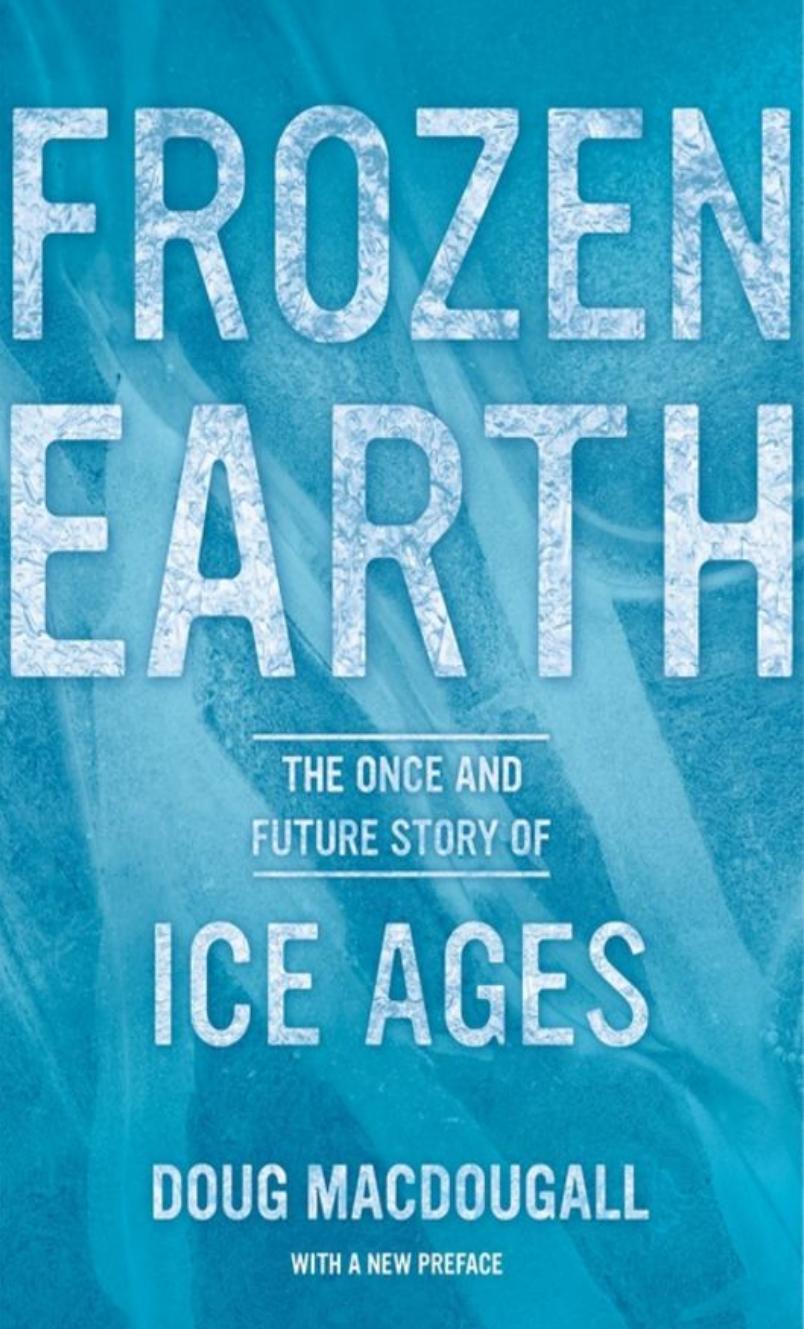Frozen Earth: The Once and Future Story of Ice Ages by Doug Macdougall

Author:Doug Macdougall
Language: eng
Format: epub, mobi, pdf
Publisher: University of California Press
Figure 14.The graph that Milutin Milankovitch sent to Wladimir Köppen shows the “equivalent latitude” for 65° N in summer, based on the amount of solar energy received, for the past 600,000 years. Milankovitch believed that glacial intervals would occur at times when the equivalent latitude was significantly higher than today, indicated by the shaded peaks on this graph.
Köppen was especially interested in these nuances in Milankovitch’s calculations. He argued that low summer temperatures in northern regions were the most critical factor for initiating permanent ice cover in Europe and North America—if summers were cool, more of the winter snow would persist without melting, the additional snow cover would cause more sunlight to be reflected back into space, and temperatures would drop further as a result, eventually leading to widespread glaciation. This was a radical departure from the conventional wisdom, the exact opposite of what most workers up to this time—including Croll and many of his supporters—had assumed: that cold winters were the key to the start of glaciation. According to Milankovitch’s calculations, the same orbital conditions that produced cool summers resulted in winters that were slightly warmer than normal. But this did not bother Köppen—the higher winter temperatures would promote evaporation, and the temperatures would still be low enough that the resulting increased precipitation would fall as snow on the growing ice sheets.
In his book, Milankovitch had calculated temperatures at various latitudes on Earth through the past 130,000 years. However, all the evidence then available indicated that the Pleistocene Ice Age with its multiple glacial advances and retreats stretched back much farther in time than this. Köppen asked if Milankovitch could extend the calculations to at least 600,000 years before the present so that they could make a detailed comparison between theory and the field evidence. It would not be necessary, he said, to do the calculations for every latitude. He suggested restricting attention to the swath between 55° and 65° north latitude, since that was the region from which much of the detailed evidence for glaciation had been gathered.
Today, scientific results are frequently reported with the aid of elaborate, colorful graphs. Even in the 1920s, especially for interdisciplinary work, it was important to think about how the results would be presented. Milankovitch’s calculations would result in tables of numbers that showed the amount of heat received from the sun at various latitudes. Tables could convey the information, but they would not have the immediate impact of a visual representation. Köppen and Milankovitch discussed the problem at length, finally deciding that a graph showing the changes over time would be best. That would illustrate for the reader both the magnitude of the variations, and exactly when the coldest and warmest intervals had occurred. When he had finished his calculations, Milankovitch sent Köppen graphs showing the amount of solar energy received at 55, 60, and 65 degrees north latitude, plotted against time (figure 14). He had calculated these values at intervals of 10,000 years back to 650,000 years ago, and it had taken him just over three months of intense work.
Download
Frozen Earth: The Once and Future Story of Ice Ages by Doug Macdougall.epub
Frozen Earth: The Once and Future Story of Ice Ages by Doug Macdougall.mobi
Frozen Earth: The Once and Future Story of Ice Ages by Doug Macdougall.pdf
This site does not store any files on its server. We only index and link to content provided by other sites. Please contact the content providers to delete copyright contents if any and email us, we'll remove relevant links or contents immediately.
The Lonely City by Olivia Laing(4774)
Animal Frequency by Melissa Alvarez(4431)
All Creatures Great and Small by James Herriot(4277)
Walking by Henry David Thoreau(3926)
Exit West by Mohsin Hamid(3797)
Origin Story: A Big History of Everything by David Christian(3666)
COSMOS by Carl Sagan(3593)
How to Read Water: Clues and Patterns from Puddles to the Sea (Natural Navigation) by Tristan Gooley(3434)
Hedgerow by John Wright(3322)
How to Read Nature by Tristan Gooley(3294)
The Inner Life of Animals by Peter Wohlleben(3286)
How to Do Nothing by Jenny Odell(3269)
Project Animal Farm: An Accidental Journey into the Secret World of Farming and the Truth About Our Food by Sonia Faruqi(3194)
Origin Story by David Christian(3170)
Water by Ian Miller(3158)
A Forest Journey by John Perlin(3045)
The Plant Messiah by Carlos Magdalena(2901)
A Wilder Time by William E. Glassley(2838)
Forests: A Very Short Introduction by Jaboury Ghazoul(2815)
